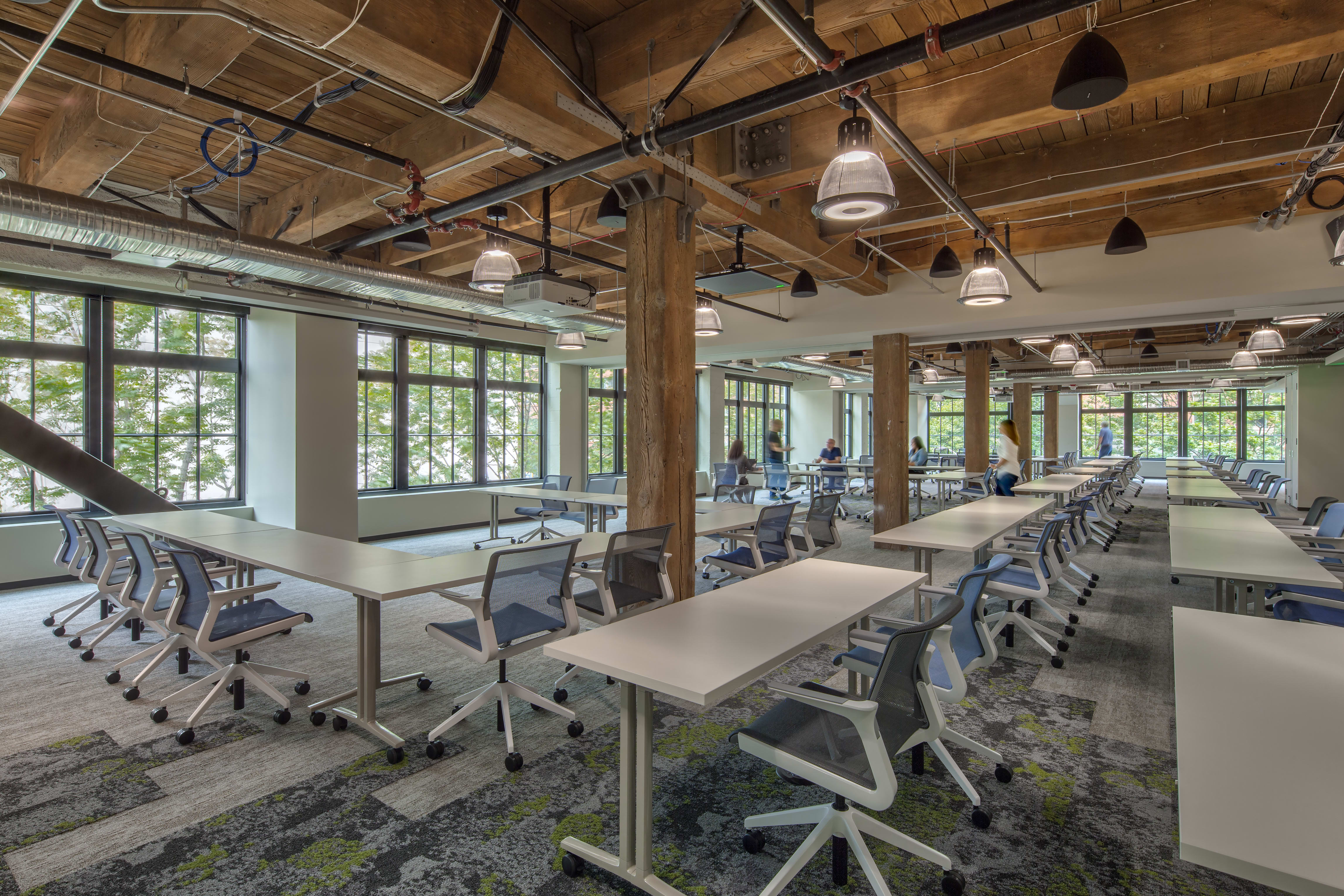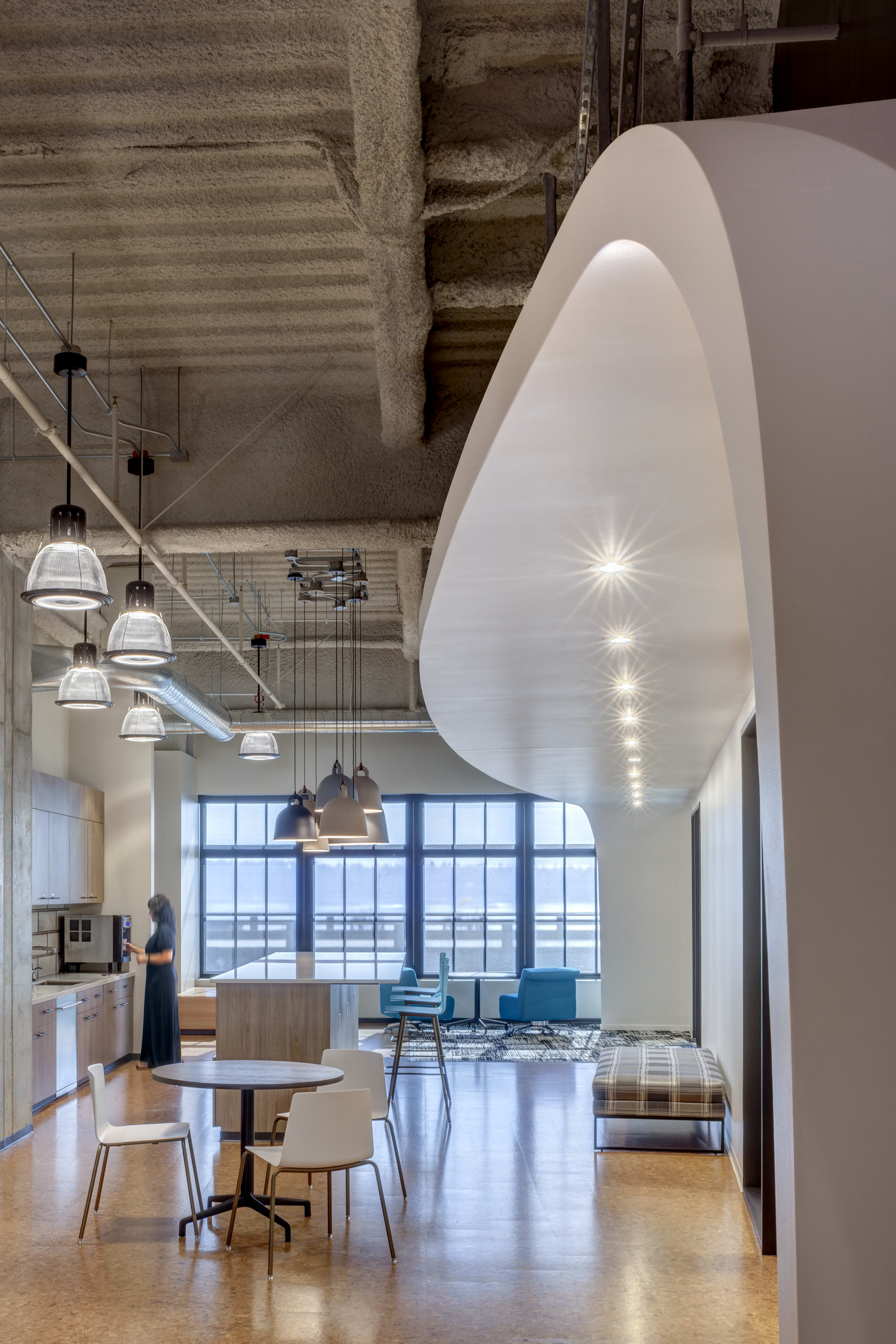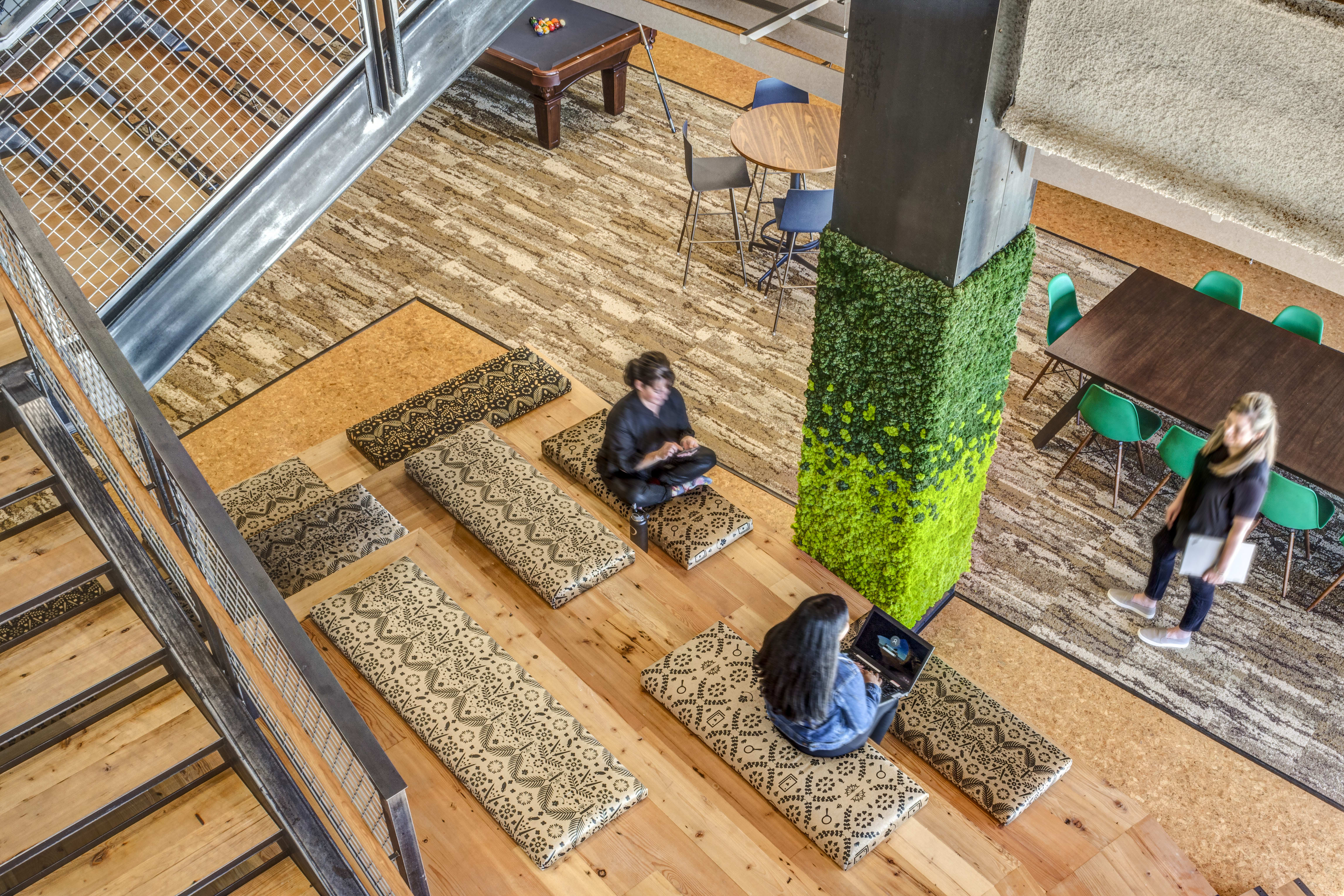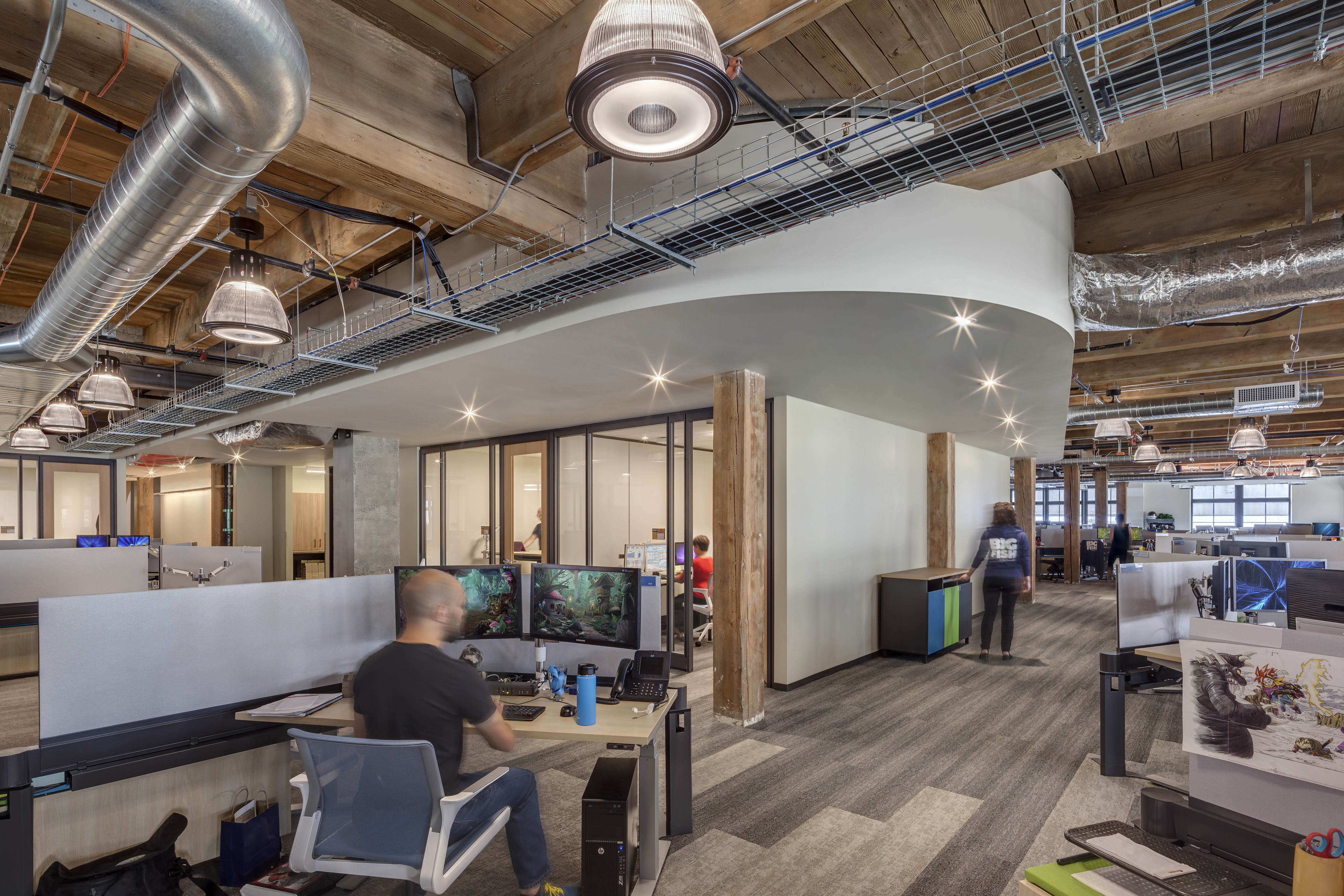Although they had just been acquired and were looking at successful growth, the executives at Big Fish—a tech gaming firm in Seattle—knew their previous office didn’t support the type of collaborative work they did or the culture they were trying to convey. And with dark interview rooms—which Evan Cottingham, Director of Real Estate and Facilities for Big Fish, described as “windowless dungeons”—the office didn’t attract potential employees.
Additionally, the secluded location of the office made commute time longer for employees and the neighborhood lacked character.
So when the opportunity to lease the seven-story, 187,000 sq. ft. Maritime Building location in the heart of Seattle’s bustling Pioneer Square came along, Big Fish found a new home for its 600+ employees that was in the center of a vibrant neighborhood and easily accessible by public transportation.
Dru Jordan, Market Development Manager for Allsteel said of the space, “The new location provides employees ample access to city amenities, public transportation and restaurants. Big Fish is a huge proponent of work-life balance. They chose not to include a cafeteria in the design of the space to encourage employees to go out, explore and be part of the community around them. The building’s location is key to that.”
Big Fish then turned to Commercial Office Interiors, IA Interior Architects and Allsteel to design a space that inspires wellness, teamwork and creative thought.
To get a feel for what the employees needed from the new office space, think tanks and focus groups were formed. What they found was their employees wanted thoughtful, subtle, and natural design choices that would provide flexibility and the tools necessary to work through ideas no matter where the user was in the office. “Everyone assumes that a game company, a tech company, is a playground, but there’s a lot of work,” Cottingham said. “I can’t fathom how much Aimee [Paganini, Lead Senior Game Producer for Big Fish] and her team does to produce a game, so I need to design for all those ideas.”
Using that information, casual conference rooms, collaborative breakout spaces, and flexible wall systems in neutral fabrics and finishes were incorporated into the design. Pops of green and blue were chosen to dot the floor plan while reindeer moss was installed to pillars, giving the office a unique look while incorporating natural elements into the interior. Rather than a windowless dungeon, each floor is now sunlit with waterfront and city skyline views.
“My favorite spaces at Big Fish are the informal collaboration areas dubbed as ‘mullet rooms,’ said Jordan. “There was conversation about whether they should be more traditional—seated height table with four chairs—or more relaxed to promote an informal meeting. They settled on creating a few traditional spaces and then created mullet rooms, promoting business in the front and a casual setting in the back. To go into their new space and see these rooms with a higher usage rate was exciting.”
Similarly, the conference rooms were designed with lounge-style seating and continental-height tables to be more comfortable and productive, getting away from the traditional large-scale conference tables and task chairs. Jillian Hirstein, Business Development Manager for Allsteel, said, “Big Fish incorporated large social spaces and presentation rooms into the design of their space allowing them to bring in industry experts and other outside organizations. The open amenity spaces help promote Big Fish and their brand, but also serve as an attraction for other organizations as they are able to use for events.” Additionally, there was an importance in designing a space that would allow employees to work away from their desk to promote spontaneous interactions and decrease burnout.
Jordan explained, “Typically we see mobility as being able to work anywhere, often off-site. This project reminded me that there are many different ways to define mobility. The work at Big Fish is so graphic-heavy that the majority of their employees aren’t able to work off-site. We had to think about their mobility as something they could achieve within close proximity to their workstations. We learned that if people have to go 50 feet from their workspace, their chance of collaboration diminishes dramatically. They needed neighborhood pockets where groups could get together briefly, then return to their workstation to execute individual tasks.”
Designing a unique office space for Big Fish’s employees was not only a success, but an important act for the company’s executives to show support for all of their team members. “Big Fish’s people are the company’s greatest asset,” explained Jeff Karp, Managing Director and President. “That’s why this space has been built entirely around their needs—to nurture well-being, foster creativity, and unlock more of the innovation that drives our people and our business. Our new office in the Maritime Building is an ideal work environment for Big Fish, which I am sure will help accelerate our success and growth going forward.”
Already the office is aiding the company’s growth. Its easy-commute location and unique design has become one of Big Fish’s best recruitment tools. The interview team routinely hears from candidates that the space itself was a deciding factor in their decision to join the gaming company.
For now, the company has settled in to their new location with positive results. New projects began almost immediately as a result of the informal and random interactions between employees using collaborative spaces. Meetings are more fluid and the range of seating options allow team members to work in whatever way is best for them. The Maritime Building has become a hub of innovation that has blossomed. Whatever the future holds for Big Fish, they're ready to grow and evolve.
Project Details
Headquarters:
Seattle, WA
187,000 sq. ft.
600+ Employees
Partnerships:
Commercial Office Interiors
Interior Architects – Seattle
Awards:
NAIOP Project of the Year 2019
Product Solutions
Seating:
Clarity®, Linger™, Vicinity™, Gunlocke Calm™
Workspaces:
Further®
Tables:
Transfer™, Gunlocke Saranac™
Architectural Walls:
Beyond®








